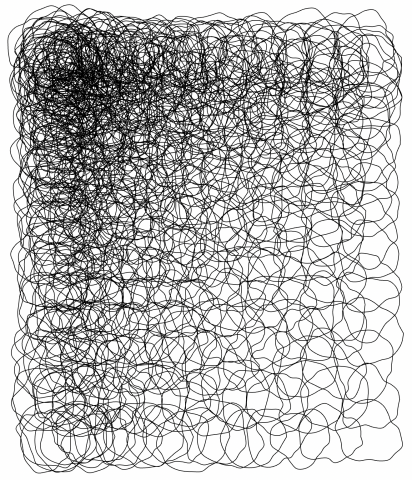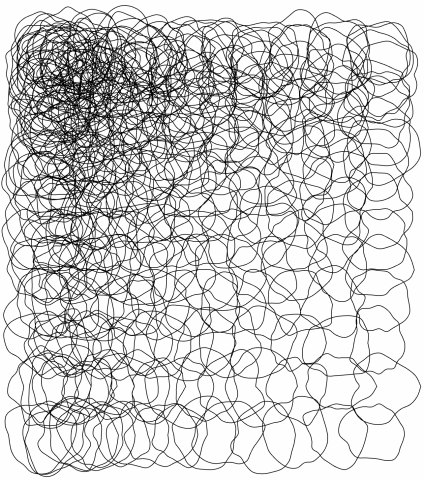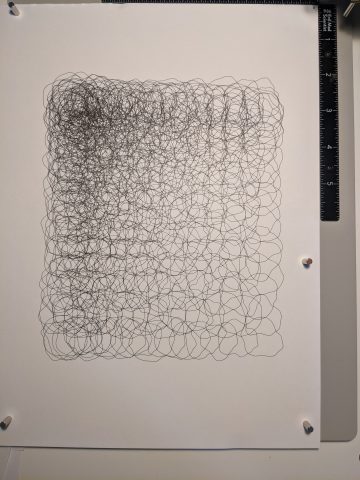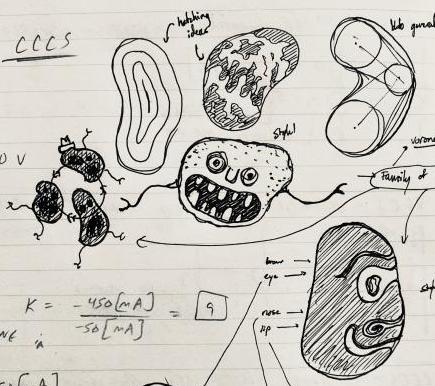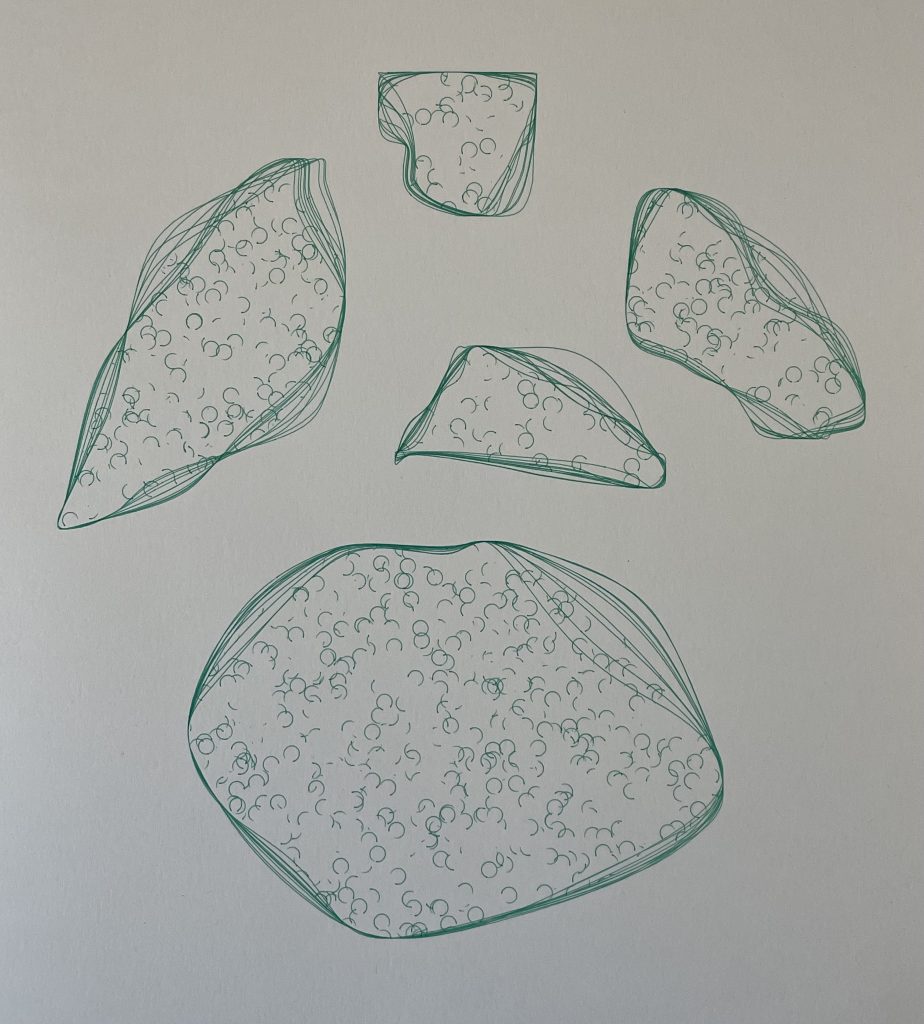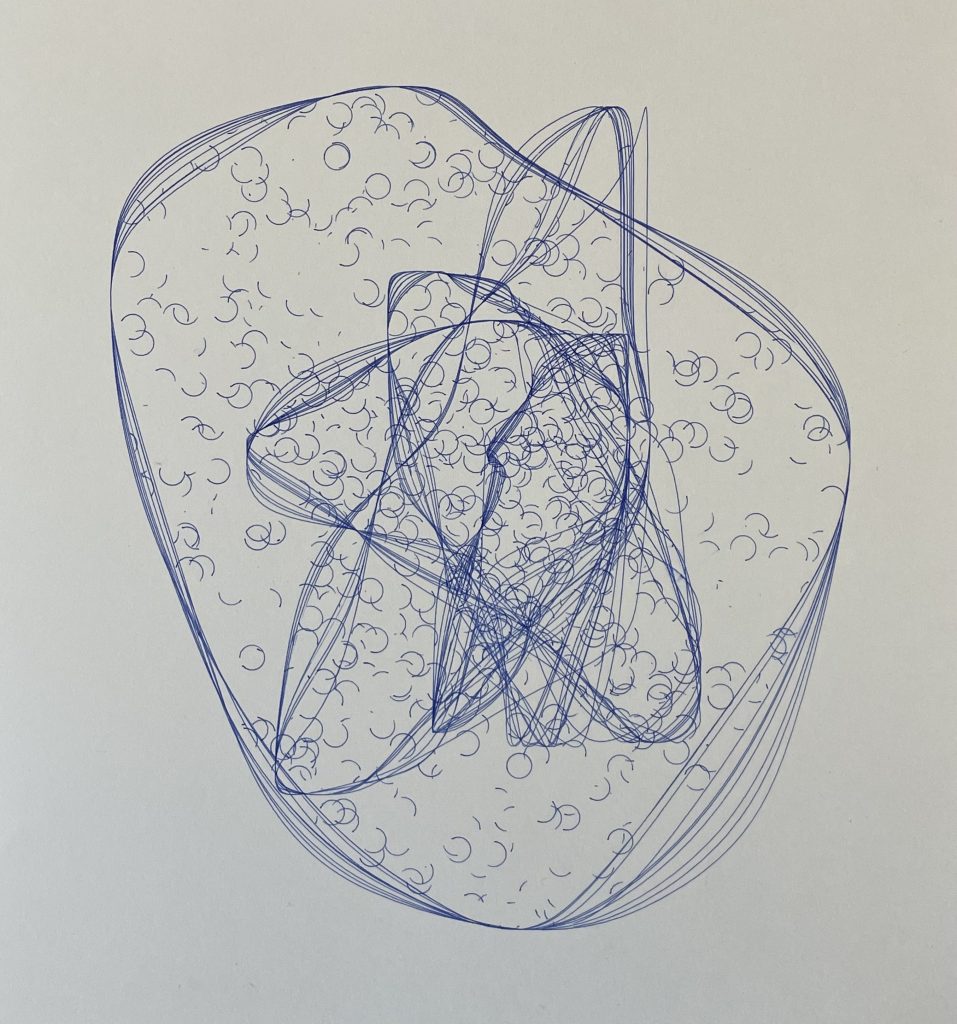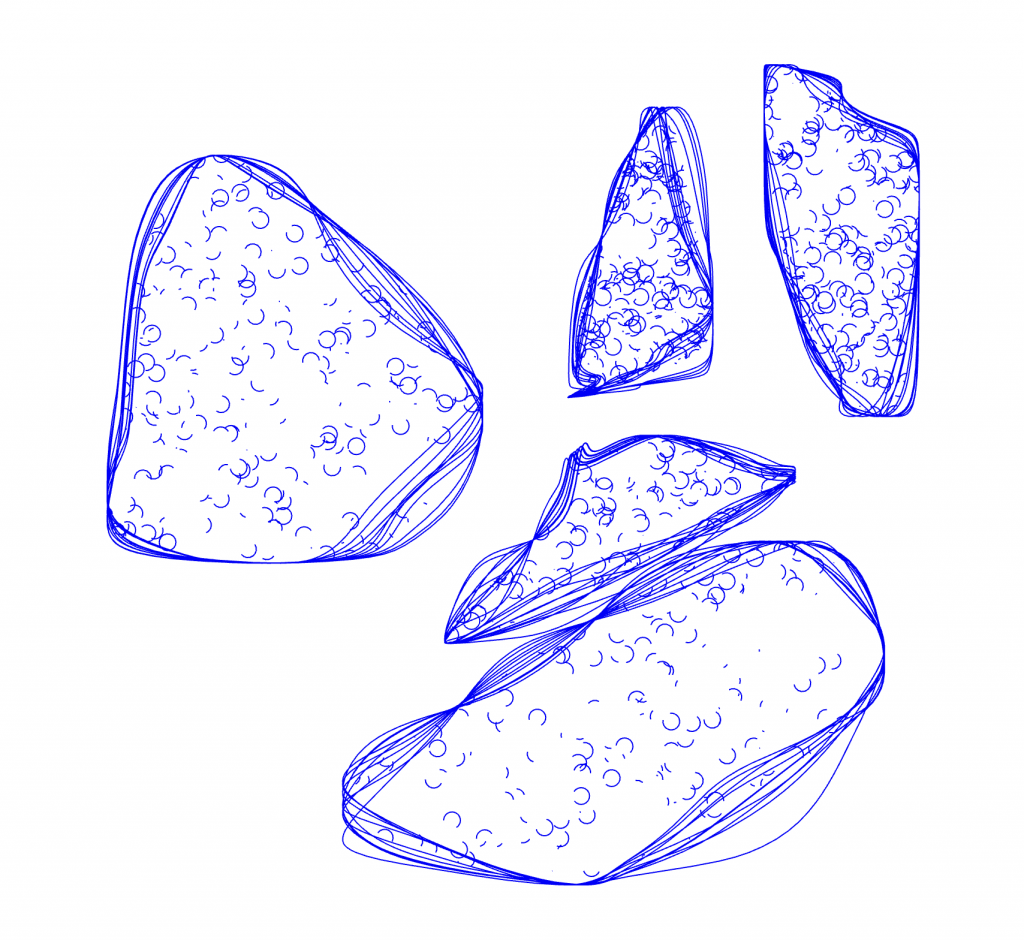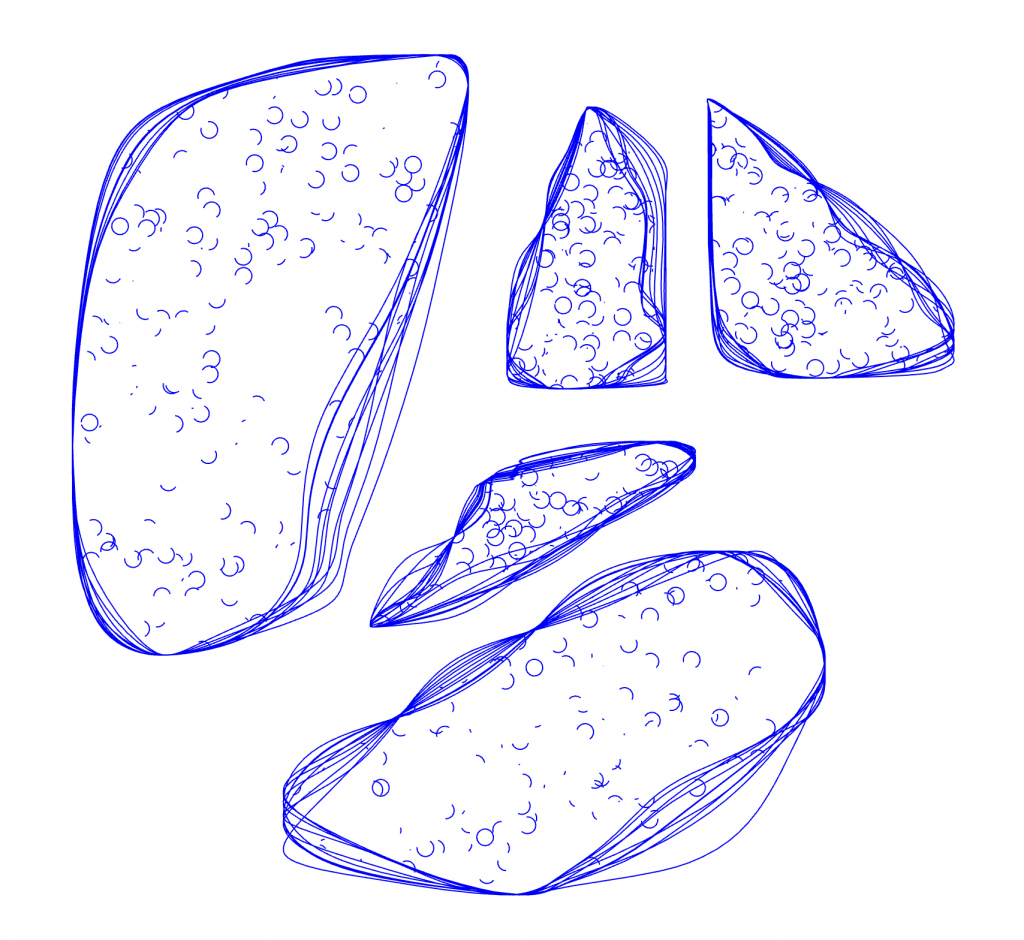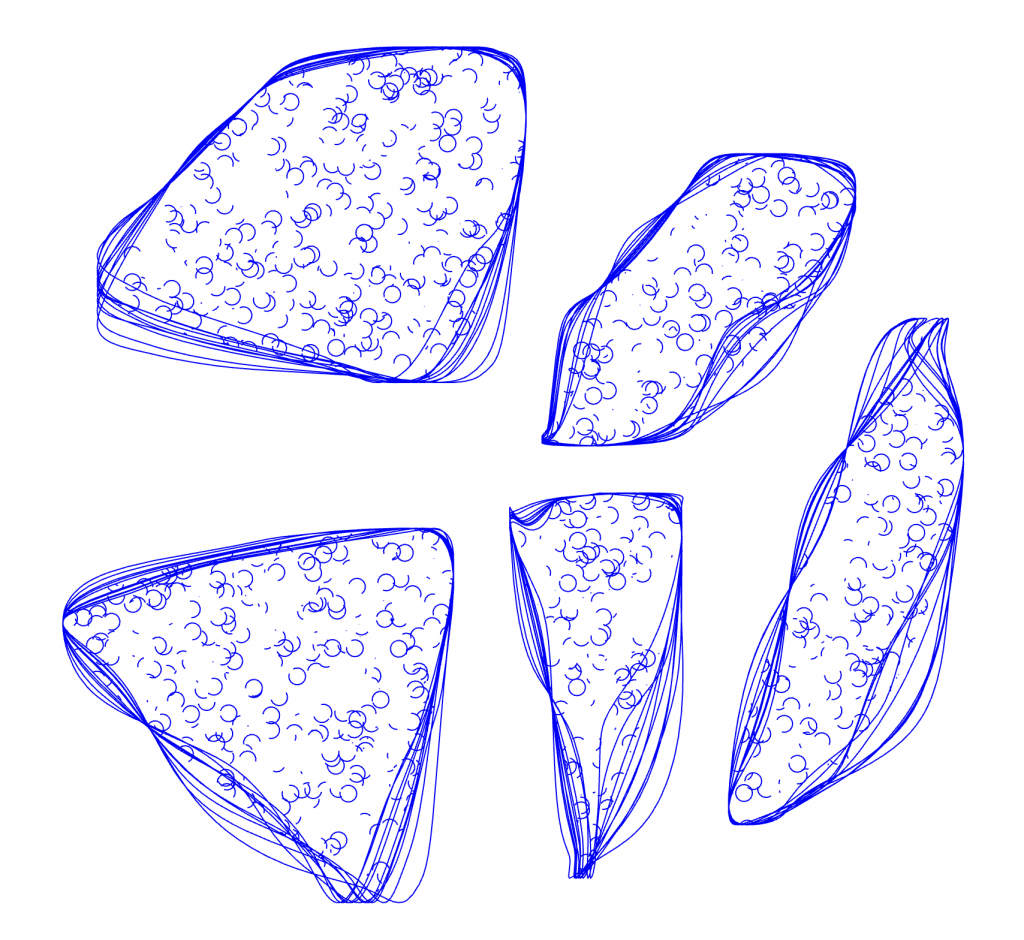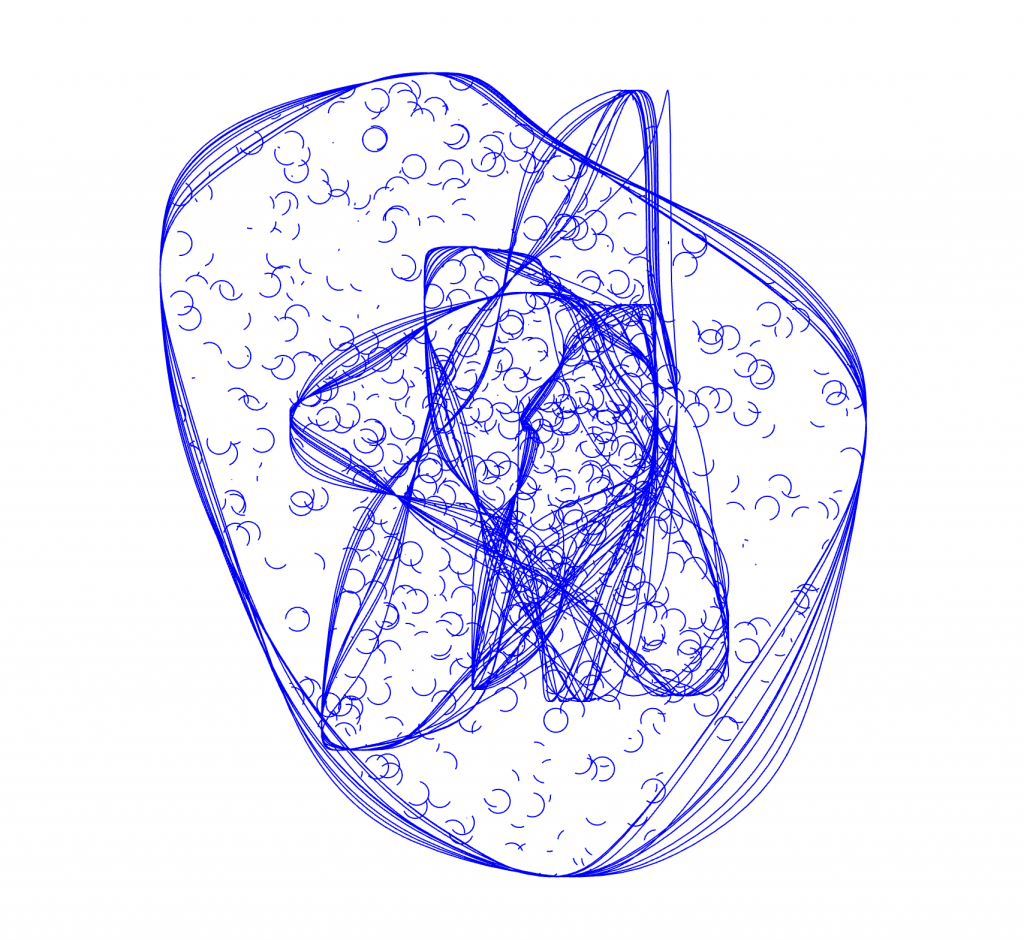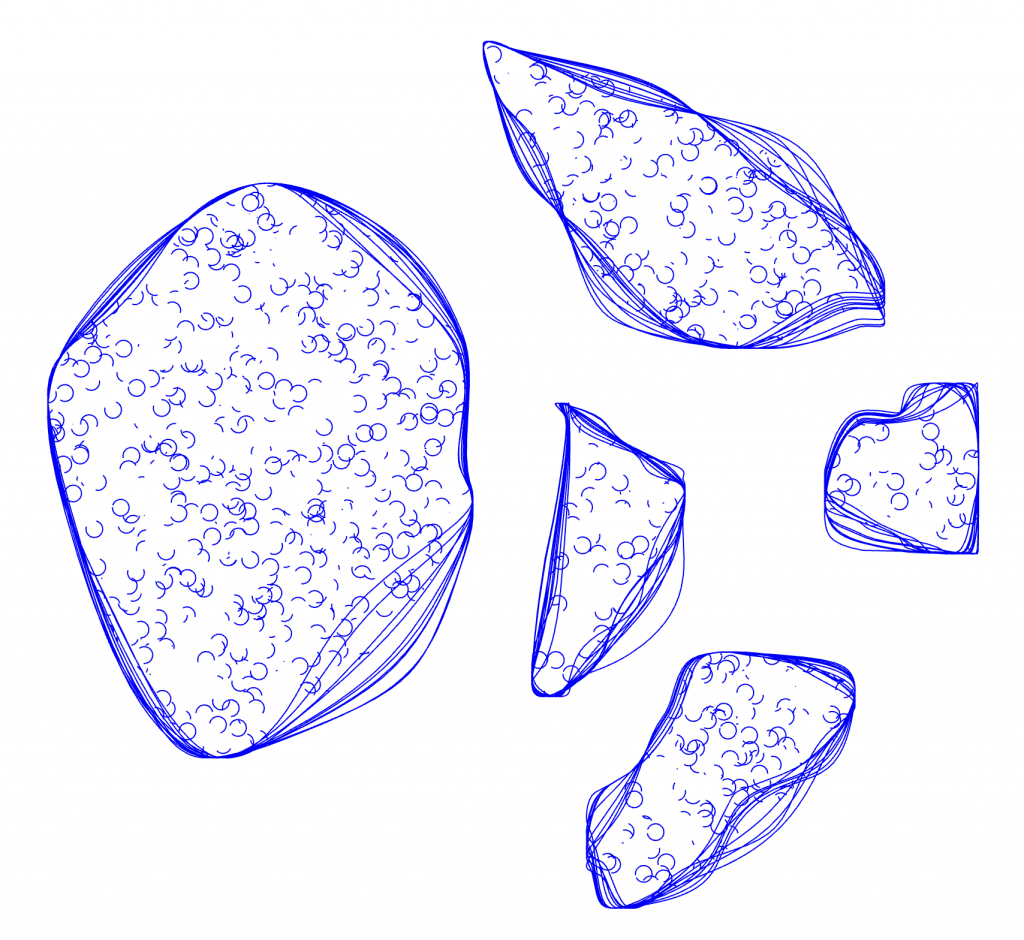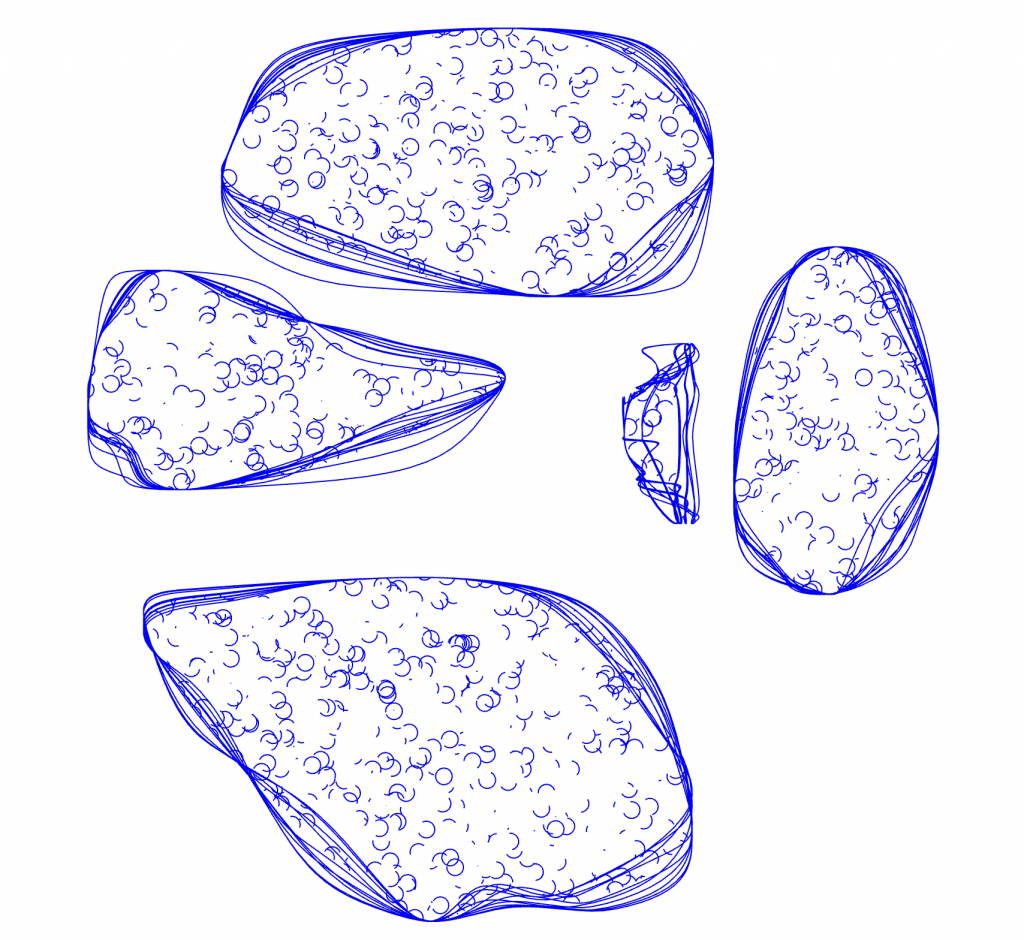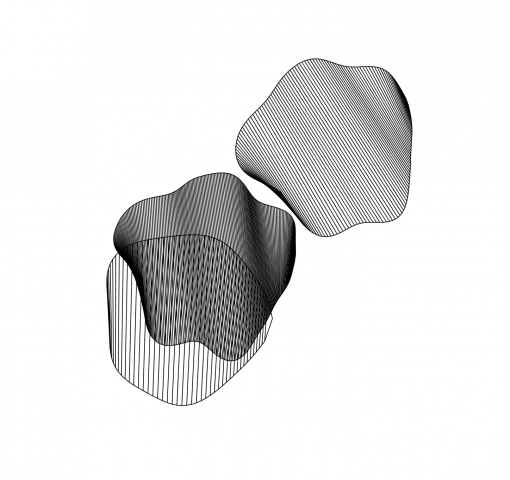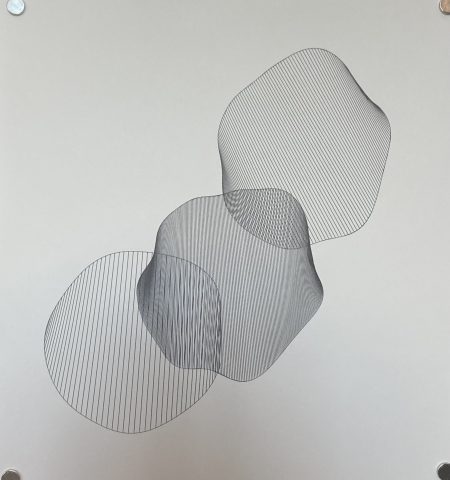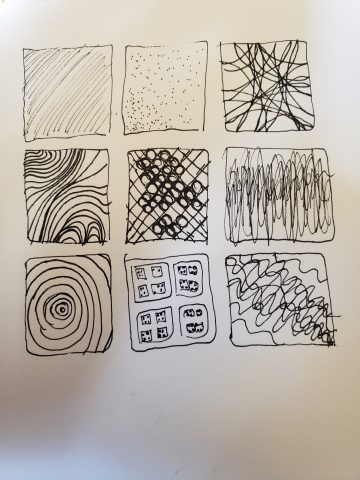One of the first things that came into my mind when we were assigned to create “blobs” for me was “what can a blob resemble”. After seeing a couple of blobs from the lecture, especially ones that illustrate a “melting” kind of effect, I thought of Salvador Dali’s La Persistencia de la Memoria and the melting clocks within the painting. I didn’t realize how blobby those clocks actually were, but their form and shape were beautiful and were great representations of real objects turned “blobby”. My initial goal was to replicate the work, but realizing how difficult it was to get the details right, I decided to make a similar interpretation of the painting that alters that keeps the clock motif, and certain defining shapes in the painting, but simplifying a lot of the complicated forms.
When converting to SVG mode in p5.js, I discovered that my code had a bug that existed and took me FOREVER to find. I ended up creating a more abstract version of the initial product, one that is more chaotic and I think diverges more from Salvador Dali’s painting.
Sketches
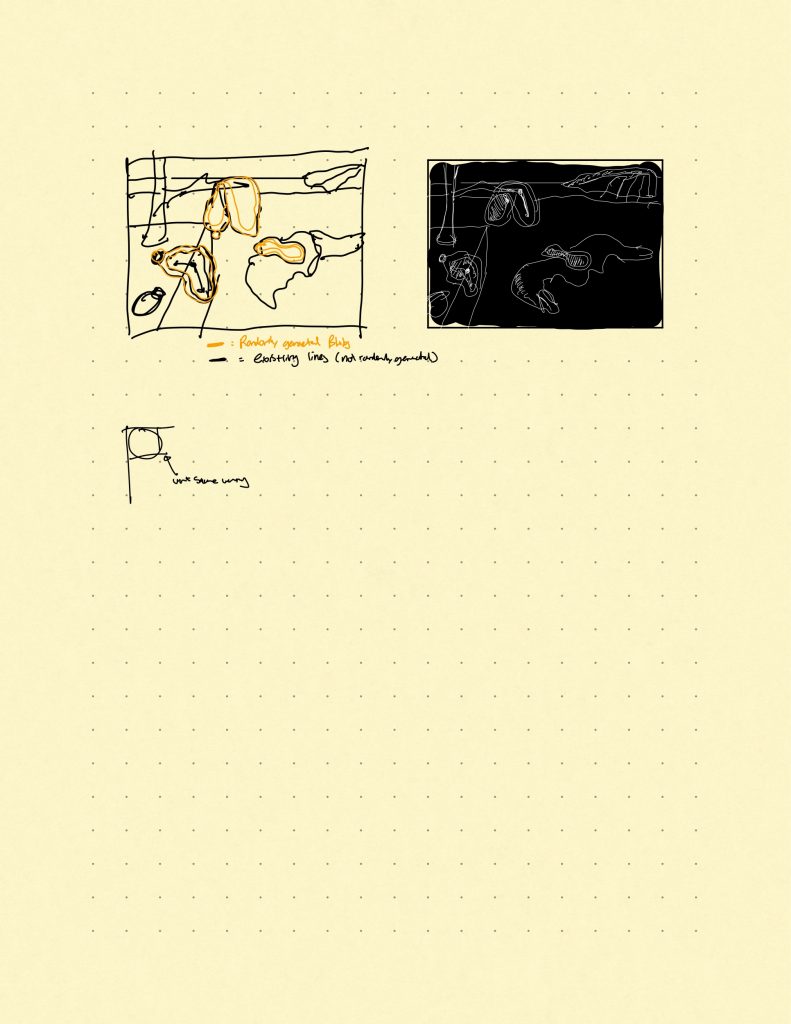
Another SVG

Another SVG

Original Non-SVG version

Blob Reading Notes:
In Laura Hyunjhee Kim’s A Blobafesto, I found the following line to be a great definition of how I see blobs:
My initial idea of defining a blob was defining it by what it could not be, which was that it cannot have sharp edges, as it interferes with how we understand language and characterize words based on it’s pronunciation and syntax (I think this still somewhat stands true for me).
I really enjoyed the reading's introduction, where she mentions the term blobosphere and how it “transforms and transcends expectations from all shapes and forms”. I think this is also a phenomenal definition that I agree with, where the potentiality of blobs as a form seems to be endless, and that's the beauty of it.

